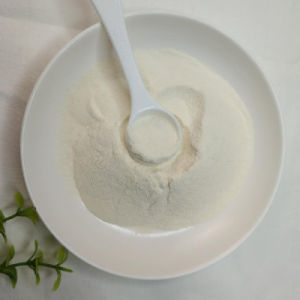Barium stearate is a type of chemical compound that has a variety of applications across different industries. It is a type of barium soap that is commonly used in the manufacturing of different products, including plastics and lubricants, among others. This paper seeks to provide an overview of barium starate’s applications, production, and safety.
Applications of Barium Stearate
- Plastics Industry: One of the main uses of barium stearate is in the plastics industry. It serves as a stabilizer and a release agent. As a stabilizer, it helps prevent degradation caused by heat and light, thus enhancing the durability and lifespan of plastic products.
- Lubricants: It is a common additive in high-temperature grease and lubricants due to its excellent heat stability and soap structure, which gives it excellent thickening properties.
- Cosmetics: The compound is also used in the production of cosmetics, primarily as a viscosity controlling agent.
- Paints and Coatings: In the paint industry, also it is used as a flatting and sanding agent.
- Other Applications: Include its use in the production of rubber, paper products, and textile materials.
Production of Barium Stearate
Involves the reaction of barium chloride with sodium stearate. This reaction results in the formation of barium stearate and sodium chloride, which is a byproduct. The process requires careful control of conditions such as temperature and pH to ensure the production of high-quality of it. It’s noteworthy that sodium stearate can be obtained from saponification of stearic acid, which is derived from both animal and vegetable fats and oils.
Detailed Production of Barium Stearate
Begins with the reaction between barium chloride and sodium stearate. The reaction is typically carried out in an aqueous solution, with sodium chloride as the byproduct.
Barium Chloride + Sodium Stearate -> Barium Stearate + Sodium Chloride
The process necessitates precise control of the reaction conditions such as temperature, pH, and reaction time to ensure high purity and quality of the product. After reaction, the product is filtered, washed, and dried. The sodium stearate used in this reaction can be obtained through the saponification of stearic acid, which can be sourced from either animal or vegetable fats and oils.
Safety
Even though it’s helpful for many things, we need to be safe with it. When using this stuff, we should wear safety gear like gloves and glasses to stop it from touching us directly.
Breathing in or swallowing too much of it can make you very sick, causing upset stomach, throwing up, diarrhea, and sometimes even muscle weakness or death. At work, there should be plenty of fresh air, and workers should know how to use the chemical safely.
When used in makeup, groups like the FDA and the European Chemicals Agency have rules about how much can be used. This is done to keep people safe.
We need to throw away barium stearate the right way, following local rules. This helps protect the earth. It shouldn’t be let out into nature because it can harm water animals.
We need to be careful with how we use and get rid of barium stearate. Also, we should look for other materials that work the same way but are safer for our health and the planet. Using simpler words can make this easier to understand.

